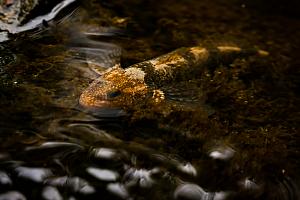Researchers find Romanian hamsters in the Danube Delta after three years of sustained work

The National Institute for Research and Development in the Danube Delta (INCDDD) recently announced the discovery of three so-called Romanian or Dobrogean hamsters, after a three-year period of research in the Danube Delta Biosphere Reserve.
From 2019 up until this year, the researchers and their collaborators (Marinov Mihai, Alexe Vasile, Dorosencu Alexandru, Bolboaca Lucian, Pocora Viorel, Pocora Irina, Chisamera Gabriel, and Sandor Attila) have been monitoring mammals of interest in the Delta. Several methods were used, such as selective trapping, and sensor-triggered cameras.
According to the message posted on the Institute’s Facebook page, the Romanian/Dobrogean hamster (Mesocricetus newtoni) is one of the four representatives of the Mesocricetus genus. It is a rare species and is endemic to south-eastern Europe, where it is present only in Romania and Bulgaria, in lowland areas along the right bank of the lower Danube.
As its vernacular name suggests, its distribution in Romania is limited to the territory of Dobrogea where it is reported to live in the Danube Alluvial Plain, the perimeter area of the Delta, the central plateau of Dobrogea, and the higher areas of the Măcin Mountains.
Easily recognizable by its stocky appearance, rounded muzzle, small round eyes, rounded ears, short legs, and very short tail, this hamster is the size of a larger mouse, with velvety fur, a greyish-brownish color on its back, and yellowish-grey fur on the sides of its body, where three clearly demarcated spots can be seen. It is a predominantly crepuscular and nocturnal animal, with greater activity in the hours after dusk, but during the brood-rearing period, it may also be active during the day.
In the area of the Danube Delta Biosphere Reserve, it is a species with marginal distribution, being reported only in a few places in the area of Bestepe, Agighiol, and Capul Doloșman, where it prefers dry, steppe habitats, and often enters vineyards and orchards.
In optimal habitats, it digs galleries 0.6 - 0.8 m deep, usually with two or three exits. Within these galleries, there is a cradle constructed from plant stems and twigs, and lined with grass and leaves, as well as several stores of provisions consisting of seeds and fruit.
The Dobrogean hamster hibernates from October to March, with periodic awakenings to consume food reserves gathered during the warmer months.
According to the researchers, there are no estimates of population trend, but it is thought to be decreasing. Factors leading to this probable decrease in number are mainly habitat restriction due to the expansion of intensive agriculture.
(Photo source: National Research and Development Institute "Danube Delta" Facebook page)













